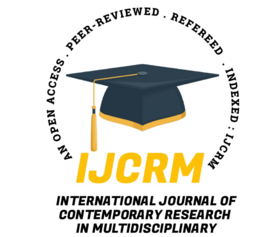International Journal of Contemporary Research In Multidisciplinary, 2025;4(4):438-445
Advances and Challenges in Microstrip Filter Design: A Comprehensive Evaluation of Modern Techniques and Materials
Author Name: Poonam R Pandey; Pravin R Prajapati;
Abstract
Microstrip filters constitute fundamental elements in radio frequency (RF) and microwave systems owing to their minimal spatial profile, cost efficiency, and integration simplicity. With the progressive advancements in wireless communication technologies, traditional filter designs are increasingly compelled to achieve superior performance while simultaneously preserving compactness and manufacturability. This review scrutinizes contemporary advancements in microstrip filter design, emphasizing innovative methodologies and emerging materials that cater to these transforming requirements.
The manuscript evaluates traditional filter architectures and juxtaposes them with modern advancements such as Defected Ground Structures (DGS), Electromagnetic Bandgap (EBG) configurations, fractal geometries, and metamaterials. These methodologies substantially enhance critical performance indicators, including insertion loss, return loss, bandwidth, and quality factor, while concurrently facilitating size reduction.
A significant portion of the investigation emphasizes the influence of substrate materials. Conventional materials such as FR4 and Rogers are analysed in relation to advanced alternatives like Low-Temperature Co-fired Ceramics (LTCC), flexible polymers, and graphene. These novel materials provide enhanced dielectric characteristics and thermal stability, rendering them appropriate for high-frequency and flexible applications.
The research methodology integrates a comprehensive literature review with electromagnetic simulations utilizing CST and HFSS to evaluate various filter configurations. The findings corroborate that advanced topologies and materials not only amplify performance but also present challenges such as fabrication intricacy and economic implications.
In summary, the manuscript accentuates the interplay between cutting-edge design methodologies and material science in surmounting conventional constraints. These revelations are crucial for researchers and engineers dedicated to the development of compact, high-performance filters tailored for next-generation wireless systems, including 5G, 6G, and the Internet of Things (IoT).
Keywords
Metamaterials; insertion loss; return loss; quality factor





